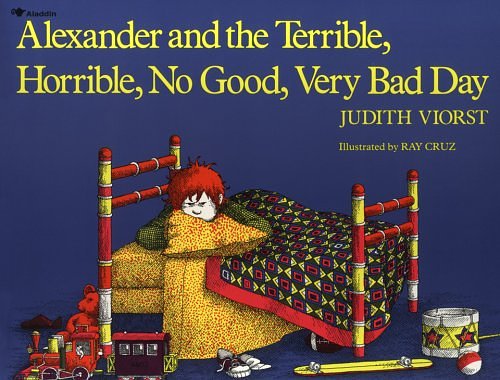Take a few minutes to think back to your childhood. What was your favorite book as a child? What did you love about this book?
Perhaps it was the comical illustrations or the amusing characters or maybe it was the inevitable happy ending.
Have you ever taken the time to re-read your beloved favorite children’s book as an adult?
I believe that the best children’s books aren’t written just for children. Somewhere inside them are also messages that adults can appreciate. In fact, given that we have experienced more in life as adults, some of the messages in children’s books might even be more relatable to us now.
In the hustle and bustle of our busy everyday adult lives, it could do us all some good to re-read some of the books we enjoyed in our youth and reconnect with our childhood wisdom.
Below is a list of 10 to get you started.
1. The Little Engine That Could by Watty Piper.
This story is a reminder to never give up. We will always be faced with obstacles when trying to achieve our goals, but we all have the strength within us to push through. Just keep “thinking you can,” and you’re more than halfway there. The mantra “I think I can” certainly helped me get through some difficult times, especially exam period in college and graduate school.
2. Alexander and Terrible, Horrible, No Good, Very Bad Day by Judith Viorst.
We all have bad days. We are often inundated with messages to “smile” or “be happy” or “just let it go.” I think it’s okay to let yourself feel like crap sometimes, as long as you’re mindful of your feelings and are not dragging others down with you. There’s no need to act like everything is hunky-dory. Simply allowing yourself to feel may be what you need to effectively heal. And if someone close to you is going through a rough time, don’t force them to “get over it,” or be too quick to give them advice. Sometimes what they really need is someone to empathize and to be there for them. This book is also a reminder that all bad days come to an end and that things do get better.
3. Charlotte’s Web by E.B. White.
I believe that Charlotte’s Web is one of the best depictions of the inner worlds of non-human animals. Animals are living beings with personalities and feelings of their own and should be valued and respected as such. Fern saw Wilbur not as food, but as a friend. Charlotte’s Web can teach us to be mindful of how we view and treat non-human animals. In fact, this book was part of my inspiration for becoming vegetarian.
4. Mockingbird by Katherine Erskine.
Mockingbird is one of the few children’s books I know of whose protagonist has Asperger’s. Unfortunately, not a lot of people fully understand Asperger’s. This lack of understanding can result in bullying or exclusion. The story gives us a glimpse into how people with Asperger’s think, which can be helpful in our interactions with Aspergians. Mockingbird can also help us appreciate neurodiversity. When faced with complex issues, we may not agree with those around us, but taking the time to acknowledge people’s contexts and why they hold certain viewpoints can allow for more peaceful interactions.
5. Tico and the Golden Wings by Leo Lionni.
Unfortunately, the world is full of people who will feel threatened by you because you have something they don’t. In school, I was often labeled as “the obnoxious girl who answered all the questions.” However, as the saying goes, “Don’t let anyone dull your sparkle.” Don’t change yourself to get others to like you. Just be yourself and the right people will love you. I never did stop answering all the questions in class—by the way—and I’m glad I didn’t.
6. Number the Stars by Lois Lowry.
Not only does Number the Stars paint a powerful picture of the events of World War II, it also encourages us to be mindful of our preconceived notions about people or groups of people. It is all too easy to form friendships or exclude people based on superficial qualities, such as religion or ethnic background. However, if we give ourselves the chance to get to know people, we might discover that appearances or membership in a certain group is not an accurate nor a complete representation of who they really are. Moreover, in spite of our differences, we might realize that we have more commonalities with people who identify differently than we do than we may have expected.
7. The Great Gilly Hopkins by Katherine Patterson.
Gilly’s journey helps us understand that there is more to family than blood. Unfortunately, our blood relatives don’t always come through for us when we need them most. Family is about connection, belonging and being there for one another through tough times. As we get older, we are likely to meet people other than family who are able to offer this to us. This may be especially true if we live far away from our biological families. We can expand our definition of family to include those people who make us feel like part of their world.
8. Make Way for Ducklings by Robert McClosky.
This adorable story is a reminder for us all to respect our common spaces and to look out for our neighbors and fellow community members. We are living in times where we’re always in a rush and attending to our own needs. Nowhere in my experience has this been more apparent than being stuck in traffic. But reminding ourselves that the people around us are in similar situations can help us be more empathetic. This empathy can appease your frustration next time a driver in front of you stops to let a pedestrian pass, for example. We all can do our part to ensure equal access to common resources.
9. I Am Going (an Elephant and Piggy book) by Mo Willems.
Carrying on with our adult lives and attending to our responsibilities means that we can’t always be with our best friends—but never fear—your true friends will not abandon you. They will always keep you in their hearts even if they can’t physically be with you. When they have the opportunity, they will come back to you. Life gets busy, but we can always take some time to keep in touch with our friends and let them know that we are thinking of them. I personally enjoy sending my friends hand-written letters or sending them a text whenever I’m reminded of them.
10. Winnie the Pooh by A.A. Milne.
This one is my personal favorite. There is a famous adage that “people don’t care how much you know until they know how much you care.” Winnie the Pooh is a reminder to relish the simple pleasures in life, such as an afternoon walk with a friend, the pretty flowers in our garden and of course, smackerels of honey. These simple pleasures are often more valuable than how much money you make or the number of degrees you’ve attained. We should no doubt work hard and set high standards for ourselves, but not at the expense of being mindful of the beauty around us.
So next time you are looking for a good read, take the opportunity to re-visit a childhood favorite.
As adults, we often forget the timeless wisdom that children’s books can offer us. The books listed above, along with several others not mentioned, are filled with gems that we can apply to our everyday lives. Perhaps even in ways that we weren’t able to as kids.
Relephant:
The 15 Best Books to Read Poolside (or under a Tree or on the Couch)
“-“
Author: Pavita Singh
Apprentice Editor: Debbi Serafinchon / Editor: Catherine Monkman
Photo: Wikimedia Commons












Read 2 comments and reply